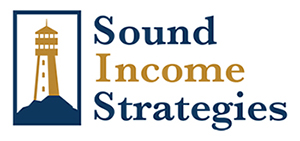[media-downloader media_id=”4043″ texts=”Download PDF” class=”cherry-btn”]
| Index | Month | YTD |
| Dow Jones | +7.3% | +15.3% |
| S&P 500 | +7.0% | +18.4% |
| NASDAQ | +7.5% | +21.3% |
| Barclays | +1.25% | +6.1% |
| 10-Yr Treasury yield was 2.12% at the end of May and 2% at the end of June | ||
Markets
The S&P 500 hit a new record high on July 1st, and on the same day, the Dow Jones Industrial Average also briefly topped its all-time high from October of 2018.* Ultimately, though, neither index is much higher at the halfway point of 2019 than it was at the beginning of 2019. On Jan. 26 a year ago, the S&P closed at 2,872, while the Dow hit 26,616. On July 2nd of this year, the S&P was at 2,964 and the Dow at 26,678.** In the months between, the market experienced bouts of extreme volatility, particularly throughout most of last year, and then again in May.
As Wall Street bounced back again in June, long-term interest rates dropped further. The yield on the 10-Year Treasury rate dipped below 2% at one point and ended the month right at an even 2%.*** With short-term rates still set at 2.5%, this means we’ve now had an inverted yield curve for about three months. Remember, an inverted yield curve has preceded every US recession since WWII, and economists are increasingly sounding alarm bells over the current situation.****
The equities rebound in June was driven partly by what appears to be a temporary truce in the Trump Administration’s trade war with China, but the bigger influence was the Federal Reserve. At its June meeting, the Fed struck its most dovish tone yet and suggested it would be willing to lower interest rates again and do more quantitative easing if predictions about a new recession by next year prove to be accurate.*****
As I’ve explained before, the Fed actually helped create the inverted yield curve by announcing in March that it would soon discontinue the “unwinding” of its last QE efforts. I predicted that announcement would put—and keep—downward pressure on long-term interest rates, and so far it has.
I also pointed out that the inverted yield curve might give Wall Street a temporary boost, and that has mostly been the case as well. In the era of artificial stimulus, the stock market has become addicted to low interest rates, so in the current environment it’s like an addict getting a new fix. Never mind the potential danger and the fact that the inverted yield curve might quickly go from being a symptom of the next recession to a being major cause. Never mind all the other warning signs of slowing GDP growth.****** For now, “irrational exuberance” is in control of the stock market, just as it was in the months leading up to the last two major market corrections.
Portfolio Transactions:
When managing your portfolio at SIS, we look for one of four possible “enhancement” trades while reviewing securities and possible transactions. Income generation is our primary goal for our clients, and we consider the following four portfolio enhancements before transacting: current yield, yield to worst (minimum projected annualized total return), interest rate risk, and default risk. The intents of these transactions are categorized as follows:
- Pay Me Now – Enhancing current yield
- Pay Me Later – Enhancing yield to worst
- Cover My Assets I. – Managing interest rate risk
- Cover My Assets II. – Managing default risk
We evaluate the transactions by determining whether they meet one, two, three, or all four enhancements. A baseball analogy for this: SINGLES, DOUBLES, TRIPLES, and HOME RUNS.
We made no swaps for the month of June.
*“S&P 500 Hits Record High Following G20 Trade Progress,” The Hill, July 1, 2019 **Macrotrends.com
***Ycharts.com
****“History Tells Us Why Fed Should Take The Inverted Yield Curve Seriously,” Forbes, May 30, 2019
*****“Fed holds Rates Steady but Opens the Door for a Rate Cut in the Future”, CNBC, June 19, 2019
******“The Stock Market’s Biggest Risk is Still Alive: Slowing Economic Growth,” Forbes, April 19, 2019
Note: The above trades were recent block trades and do not reflect all trades done on an individual specific basis. Sound Income Strategies, LLC is a registered investment advisor. Information presented is for educational purposes only and does not intend to make an offer or solicitation for the sale or purchase of any specific securities, investments, or investment strategies. Investments involve risk and, unless otherwise stated, are not guaranteed. Past performance is not an indication of future results. Be sure to first consult with a qualified financial advisor or tax professional about your specific financial situation before implementing any strategy discussed herein.
You are advised to give independent consideration to, and conduct independent investigation with regards to the information above in accordance with your individual investment objectives. Use of the Information is at the reader’s risk, is strictly intended for informational purposes in conjunction with the recipient’s due diligence, and should not be construed as a solicitation by Sound Income Strategies, LLC. Past performance will never indicate or guarantee future behavior. Sound Income Strategies, LLC does not represent or warrant that the contents of the document are suitable for you from compliance, regulatory, legal, or any other perspective. We shall have no responsibility or liability for your use or non-use of the document or any portion thereof.
Sound Income Strategies, LLC is registered as an investment advisor under the Investment Advisers Act of 1940 and is regulated by the SEC. Sound Income Strategies, LLC and its affiliates may only transact business or render personalized investment advice in those states and jurisdictions where we are registered or otherwise qualified to do so.
